Fed to deliver two 25-basis-point hikes in Q1
BENGALURU: The US Federal Reserve will end its tightening cycle after a 25-basis-point hike at each of its next two policy meetings and then likely hold interest rates steady for at least the rest of the year, according to most economists in a Reuters poll.
Fed officials broadly agree the U.S. central bank should slow the pace of tightening to assess the impact of the rate hikes. The Fed raised its benchmark overnight interest rate by 425 basis points last year, with the bulk of the tightening coming in 75- and 50-basis-point moves.
As inflation continues to decline, more than 80% of forecasters in the latest Reuters poll, 68 of 83, predicted the Fed would downshift to a 25-basis-point hike at its Jan. 31-Feb 1 meeting. If realized, that would take the policy rate - the federal funds rate - to the 4.50 percent-4.75 percent range.
The remaining 15 see a 50-basis-point hike coming in two weeks, but only one of those was from a U.S. primary dealer bank that deals directly with the Fed.
The fed funds rate was expected to peak at 4.75 percent-5.00 percent in March, according to 61 of 90 economists. That matched interest rate futures pricing, but was 25 basis points lower than the median point for 2023 in the "dot plot" projections issued by Fed policymakers at the end of the Dec. 13-14 meeting.
"U.S. inflation shows price pressures are easing, yet in an environment of a strong jobs market, the Federal Reserve will be wary of calling the top in interest rates," noted James Knightley, chief international economist at ING.
The expected terminal rate would be more than double the peak of the last tightening cycle and the highest since mid-2007, just before the global financial crisis. There was no clear consensus on where the Fed's policy rate would be at the end of 2023, but around two-thirds of respondents had a forecast for 4.75 percent-5.00 percent or higher.
The interest rate view in the survey was slightly behind the Fed's recent projections, but the poll medians for growth, inflation and unemployment were largely in line.
Inflation was predicted to drop further, but remain above the Fed's 2 percent target for years to come, leaving a relatively slim chance of rate cuts anytime soon.
In response to an additional question, more than 60 percent of respondents, 55 of 89, said the Fed was more likely to hold rates steady for at least the rest of the year than cut. That view lined up with the survey's median projection for the first cut to come in early 2024.
However, a significant minority, 34, said rate cuts this year were more likely than not, with 16 citing a plunge in inflation as the biggest reason. Twelve said a deeper economic downturn and four said a sharp rise in unemployment.
"The Fed has prioritized inflation over employment, therefore only a sharp decline in core inflation can convince the FOMC (Federal Open Market Committee) to cut rates this year," said Philip Marey, senior U.S. strategist at Rabobank.
"While the peak in inflation is behind us, the underlying trend remains persistent ... we do not think inflation will be close to 2 percent before the end of the year."
In the meantime, the Fed is more likely to help push the economy into a recession than not. The poll showed a nearly 60 percent probability of a US recession within two years.
While that was down from the previous poll, several contributors had not assigned recession probabilities to their forecasts as a slump was now their base case, albeit a short and shallow one as predicted in several previous Reuters surveys.
The world's biggest economy was expected to grow at a mere 0.5 percent this year before rebounding to 1.3 percent growth in 2024, still below its long-term average of around 2 percent.
-
 Damson Idris, Lori Harvey Add Feul To Patch Up Rumors With PDA: Watch
Damson Idris, Lori Harvey Add Feul To Patch Up Rumors With PDA: Watch -
 Jealous Clash Over Boyfriend At Texas Gym Ends In Arrest
Jealous Clash Over Boyfriend At Texas Gym Ends In Arrest -
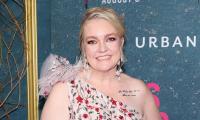 Colleen Hoover Shares Major Update On Her Cancer Battle: 'Huge And Scary'
Colleen Hoover Shares Major Update On Her Cancer Battle: 'Huge And Scary' -
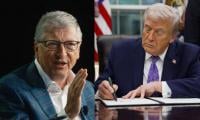 Trump Targets Microsoft Over AI Electricity Costs
Trump Targets Microsoft Over AI Electricity Costs -
 ‘Making Star Trek Real’: Elon Musk Reveals Futuristic Vision For SpaceX
‘Making Star Trek Real’: Elon Musk Reveals Futuristic Vision For SpaceX -
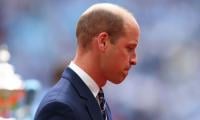 William Feels Frustrated As Tighter Security Makes Lives Of Windsor Residents Harder
William Feels Frustrated As Tighter Security Makes Lives Of Windsor Residents Harder -
 Meta Compute: Zuckerberg's Gigawatt-scale Bet To Dominate The AI Era
Meta Compute: Zuckerberg's Gigawatt-scale Bet To Dominate The AI Era -
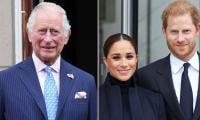 King Charles Big Plans For Meghan Markle, Prince Harry Revealed
King Charles Big Plans For Meghan Markle, Prince Harry Revealed -
 'Stranger Things' Creators Duffer Brothers Face Shocking Accusations
'Stranger Things' Creators Duffer Brothers Face Shocking Accusations -
 Google Ends Dark Web Personal Data Leak Alerts From January 15
Google Ends Dark Web Personal Data Leak Alerts From January 15 -
 Elon Musk’s X In Legal Trouble: List Of Countries Taking Action Over Grok AI Deepfakes
Elon Musk’s X In Legal Trouble: List Of Countries Taking Action Over Grok AI Deepfakes -
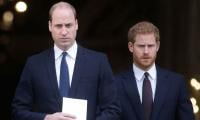 Prince William Takes Shocking New Stance On Prince Harry's Fight For Security
Prince William Takes Shocking New Stance On Prince Harry's Fight For Security -
 Kate Middleton Sends Powerful Message To Meghan Markle, Prince Harry
Kate Middleton Sends Powerful Message To Meghan Markle, Prince Harry -
 BBC Seeks Dismissal Of Trump's $10bn Defamation Lawsuit
BBC Seeks Dismissal Of Trump's $10bn Defamation Lawsuit -
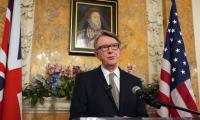 Ex-UK Envoy Mandelson Issues ‘unequivocal’ Apology To Epstein's Victims
Ex-UK Envoy Mandelson Issues ‘unequivocal’ Apology To Epstein's Victims -
 Kate Middleton Accused Of Being ‘silent Assassin’ Pitting William Against Andrew
Kate Middleton Accused Of Being ‘silent Assassin’ Pitting William Against Andrew



